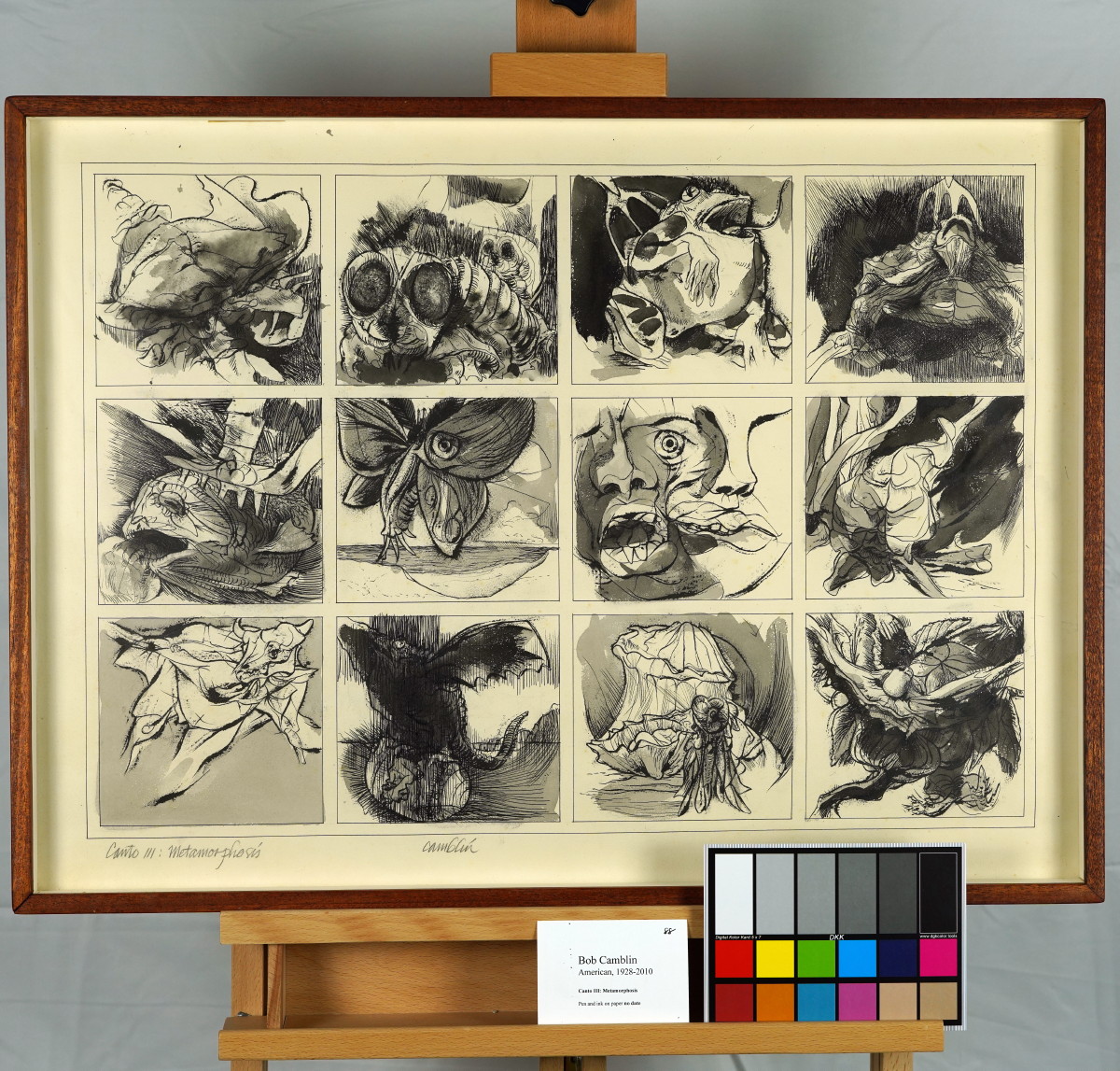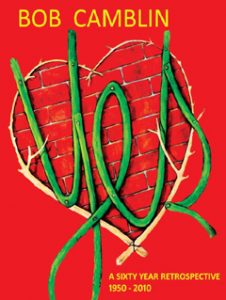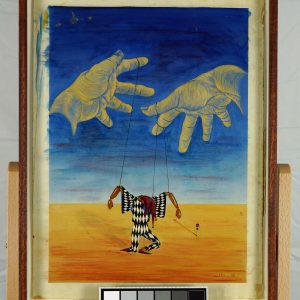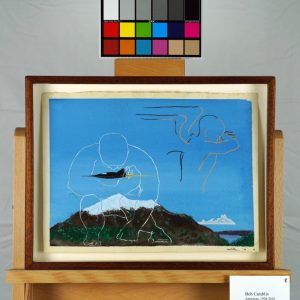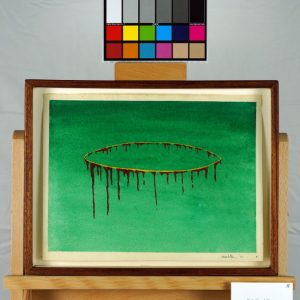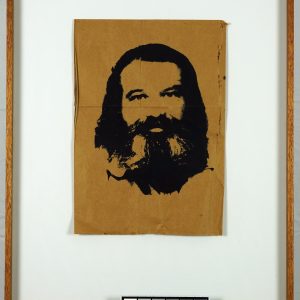Description
Cantos III : Metamorphosis, no datePen and ink on paper
Signed
21.5 x 29 in. (frame)
original, includes certificate of authenticity from ArtTrust
The artwork “Cantos III Metamorphosis” features a grid of twelve square panels, each presenting a different surreal image. The illustrations include a variety of grotesque and fantastical subjects, such as distorted human faces, hybrid creatures, and unsettling close-ups of insects and other organic forms. The consistent use of monochromatic tones and line work ties the individual images together while allowing each panel to convey a distinct mood and narrative.
From a Zen perspective, the series invites viewers to confront the illusory nature of reality and the myriad forms of attachment and aversion. Each panel, with its peculiar depiction of life forms and distorted faces, may symbolize the transient nature of the self and the ego’s struggle to define itself in a world of constant flux. The grotesque and the beautiful blend together, reflecting the Zen concept of accepting the “suchness” of all things, whether considered pleasant or unpleasant.
Drawing from the I Ching, this artwork may resonate with Hexagram 18 (“Work on What Has Been Spoiled”). The hexagram suggests the need to confront decay and address what has gone awry. The grotesque images evoke a sense of corruption or imbalance, perhaps representing internal or external disharmonies. The collection of panels may symbolize the stages of working through these imperfections to reach a state of clarity or renewal.
Combining the Zen and I Ching insights, this series can be seen as an exploration of transformation. The unsettling imagery serves to push the viewer out of their comfort zone, confronting the mind with the raw and unfiltered aspects of existence. It illustrates the journey from recognizing decay or imbalance (Hexagram 18) to achieving a mindful acceptance of all phenomena as part of a unified whole. This acceptance is central to the Zen practice of seeing beyond dualities and embracing the “suchness” of reality.
In the context of art history, these works evoke elements of surrealism, a movement known for exploring the unconscious mind and the world of dreams. The grotesque and hybrid figures may remind viewers of works by artists like Max Ernst or Francisco Goya, who delved into dark and fantastical imagery to reveal deeper truths about human nature and society. The series also shares affinities with the tradition of “memento mori” in art, where unsettling imagery serves as a reminder of mortality and the ephemeral nature of life.
*Shipping cost will vary, please inquire at sales@camblingallery.com before purchasing.
Currently ships from Oregon, USA
Member of artnet? Apply for a discount! Inquire about intergallery and permanent loans for museums.
“Cantos III” was featured in his Yes Retrospective
Reproductions of this drawing are available in multiple sizes!
Click here to use our high-resolution viewer!
This artwork is available with a non-fungible token to ensure traceability and transparency of provenance.
The royalty factor – Unlike traditional artworks, such as paintings, mosaics, statues, and the like, NFTs can be programmed to provide royalties to you every time the painting (and token) is sold and resold – for eternity. That mind-bending Camblin you sold could be worth millions one day and provide income for your great-great-great grandkids!
Anti-forgery – The central idea underpinning NFTs is that they are built on the blockchain, which is meant to offer advanced security. Think of it like an un-erasable and un-avoidable copyright.
Easy authentication – Another compelling aspect of NFT art and NFTs in general is the ability to quickly and easily authenticate items, as the record of ownership is scrupulously kept on the blockchain.
